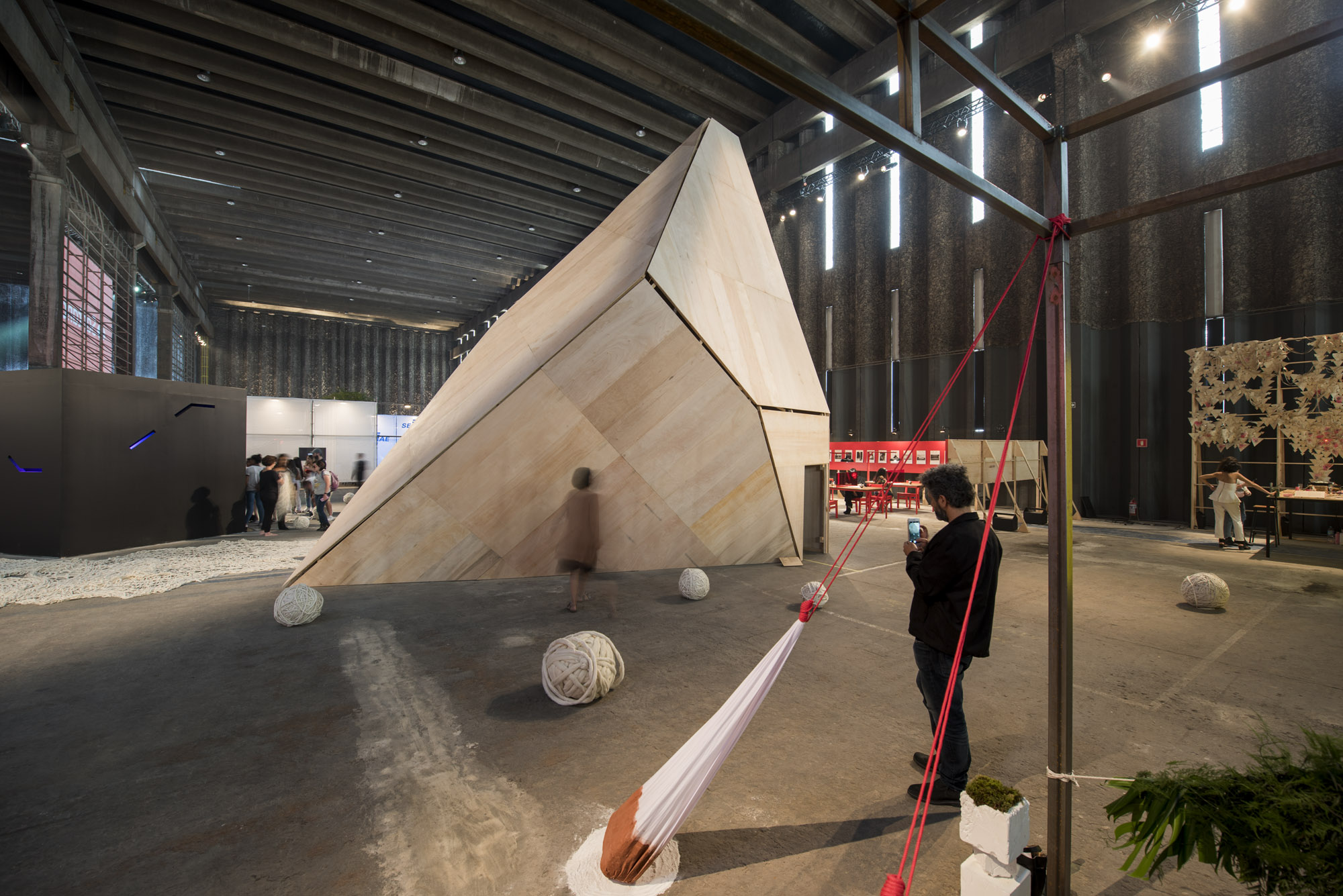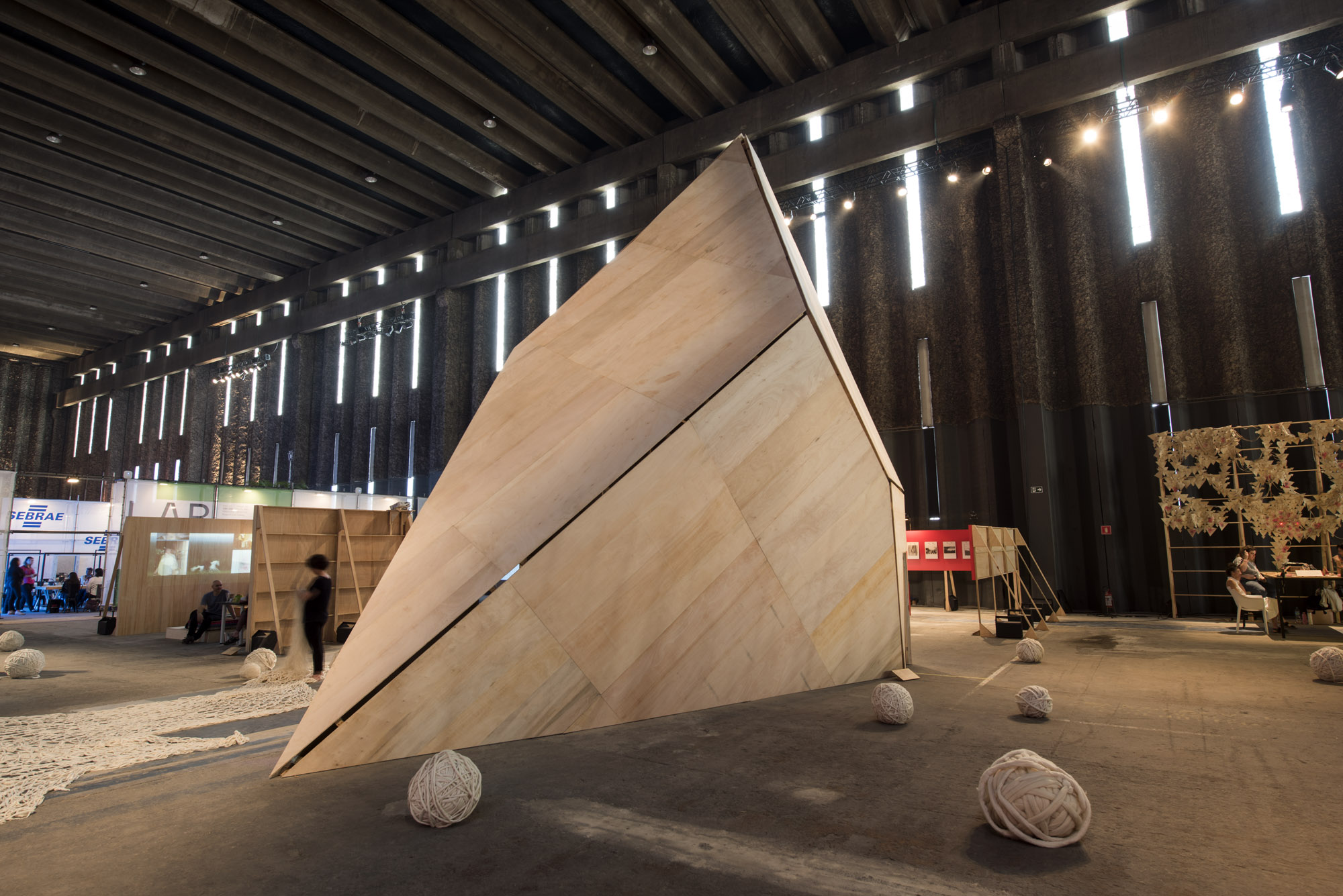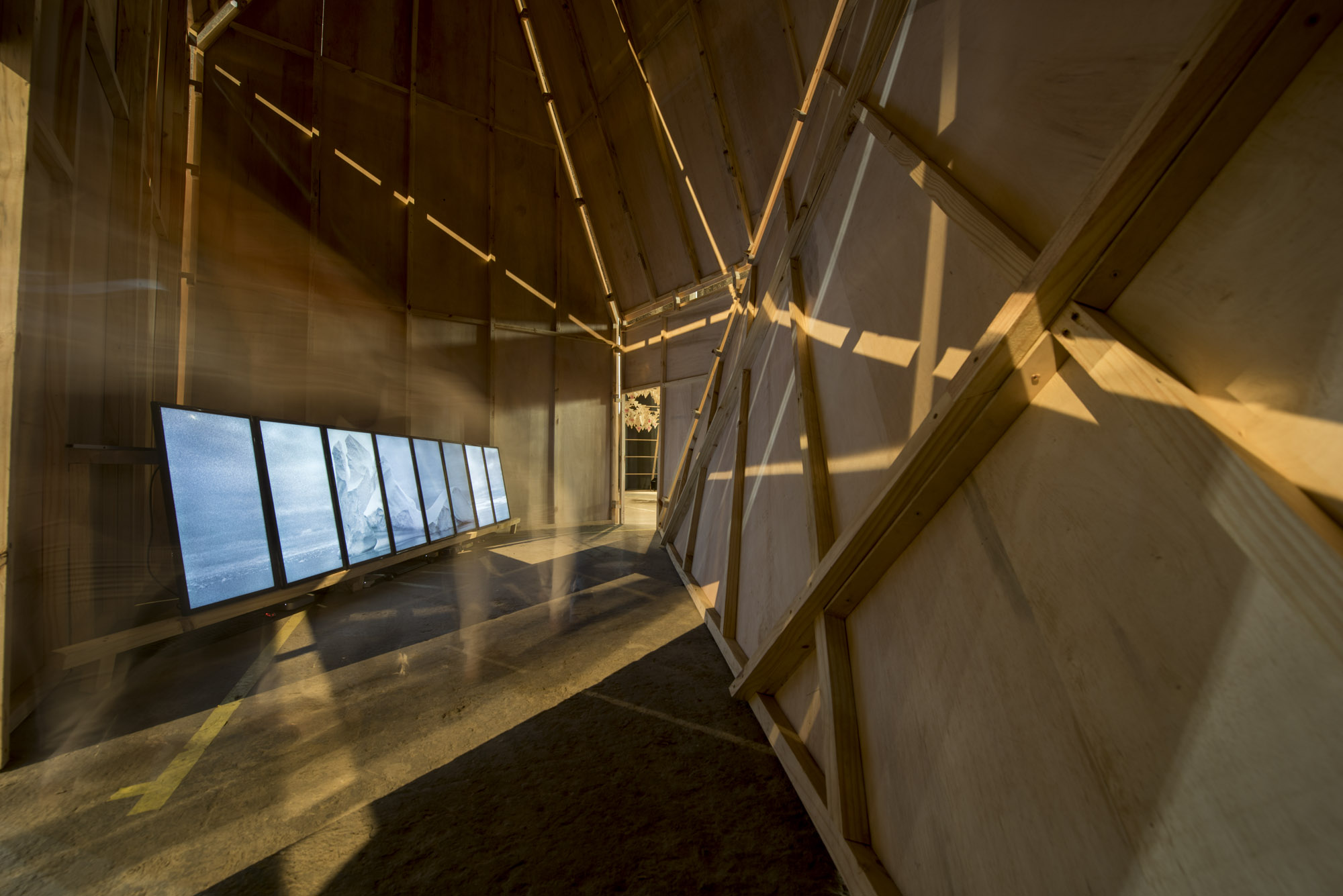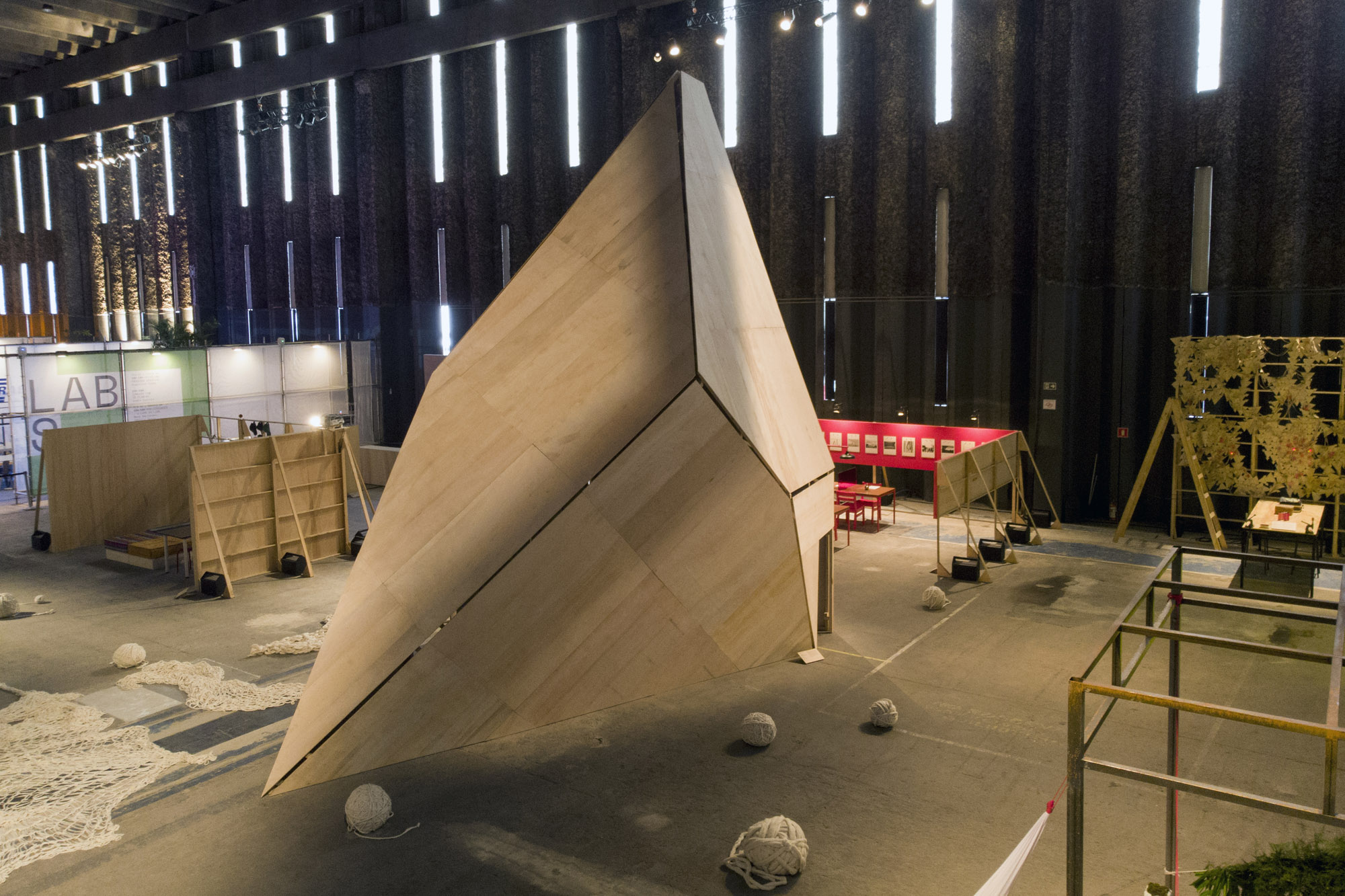Iceberg
interactive installation
Fernando Velázquez, 2018
wood structure, 8 monitors, 4 computers, kinect.
In this project, the figure of the iceberg, an element of nature most of which is invisible to our eyes, makes an allegory with the impact that technological advances have been introducing in contemporary societies.
The complex webs that shape human culture were woven in parallel to the technical and technological discoveries and inventions. However, in the last 100 years, the technological development is calling into question the very survival of the species, either by impact on daily life, or by the destruction and depletion of natural resources. In this sense, "Iceberg" is a mixture of sculpture, architectural object and installation
interactive that seeks to point out and reflect on the contrasts of this sensitive scenario. Iceberg seeks to create a gap between form and function.
With a challenging design, it was designed and built using parametric software and laser cutting features. On the other hand, it was purposely built with precarious materials as the ones uses in the slums all over the world. Inside, where the structure is apparent, the work includes an interactive system composed of computers, sensors and a series of monitors that, aligned, complete the image of an Iceberg, now real (photo by Ignácio Aronovich). Each time people pass in front of the monitors (there is no way to cross their interior without being in front of one of them) the image segment corresponding to that monitor is cleared. The only way to see the image completely is from the outside.
Like Bernard Tschumi's Folies at the Parc de la Villette in Paris, in "Iceberg" there is not an evident functionality configuring a hybrid of monument, temple, space of leisure and work of art, submerged and invisible part of this Iceberg called technology.
Parametry and Architecture plots: Andre Mafra
Carpentry: Leo Ceolin
Programming: Matheus Leston
Image of the Iceberg: Ignacio Aronovich
Pics: Ignacio Aronovich / LostArt










